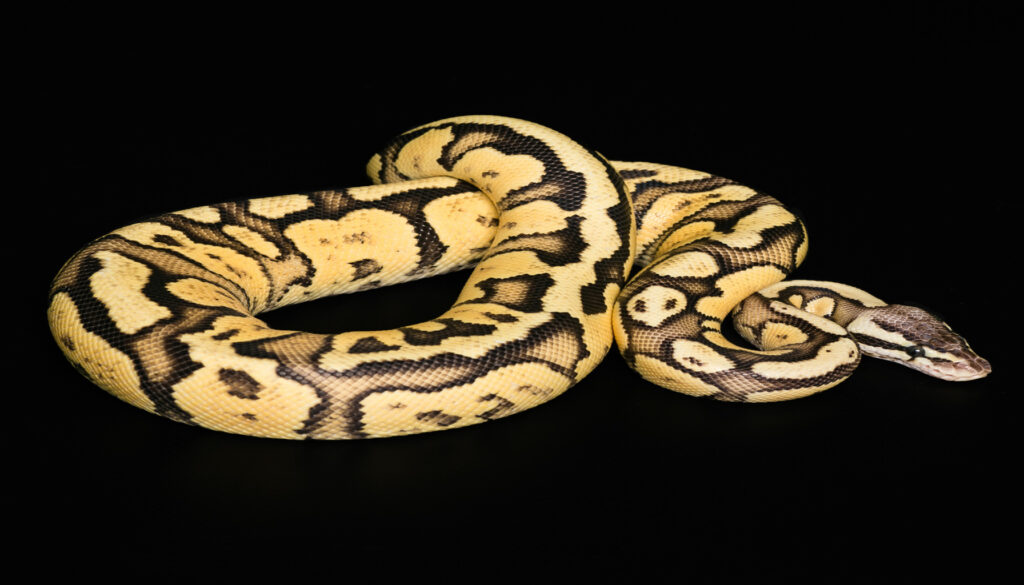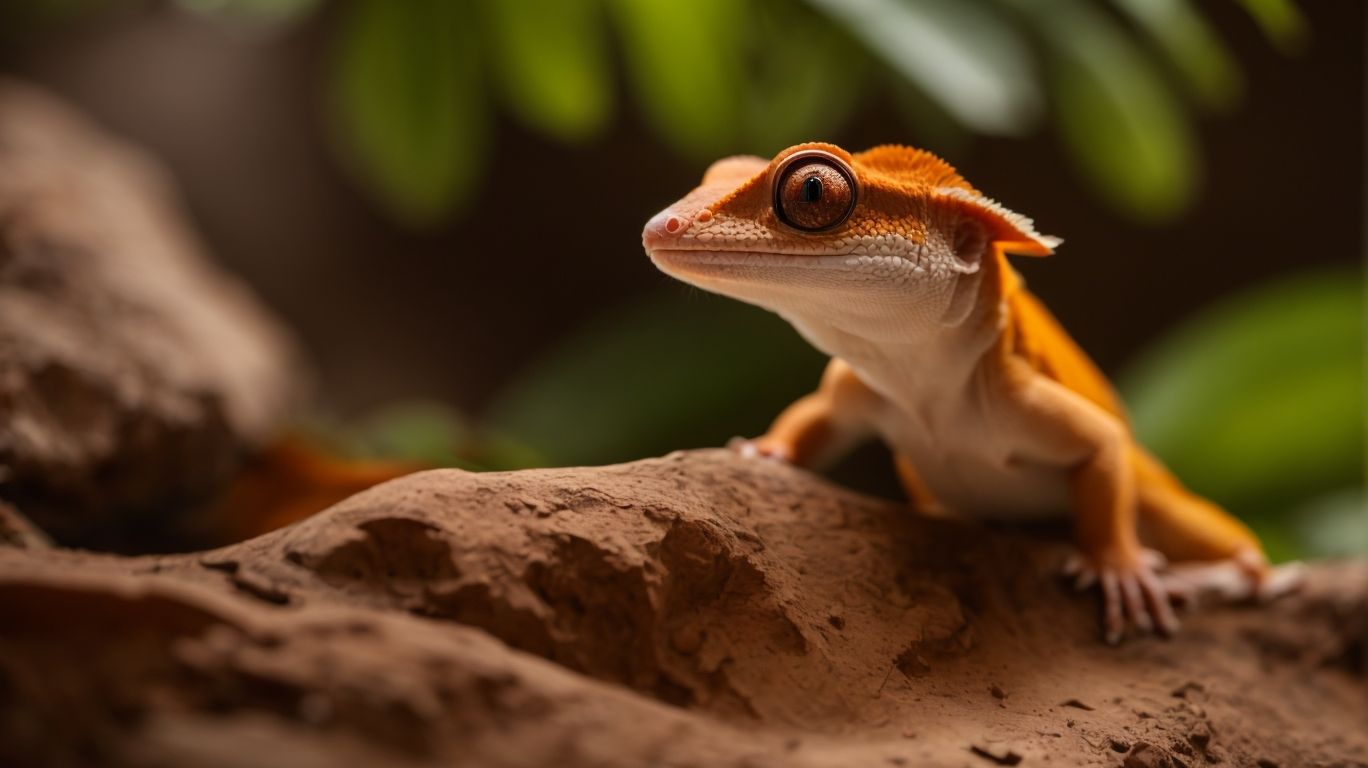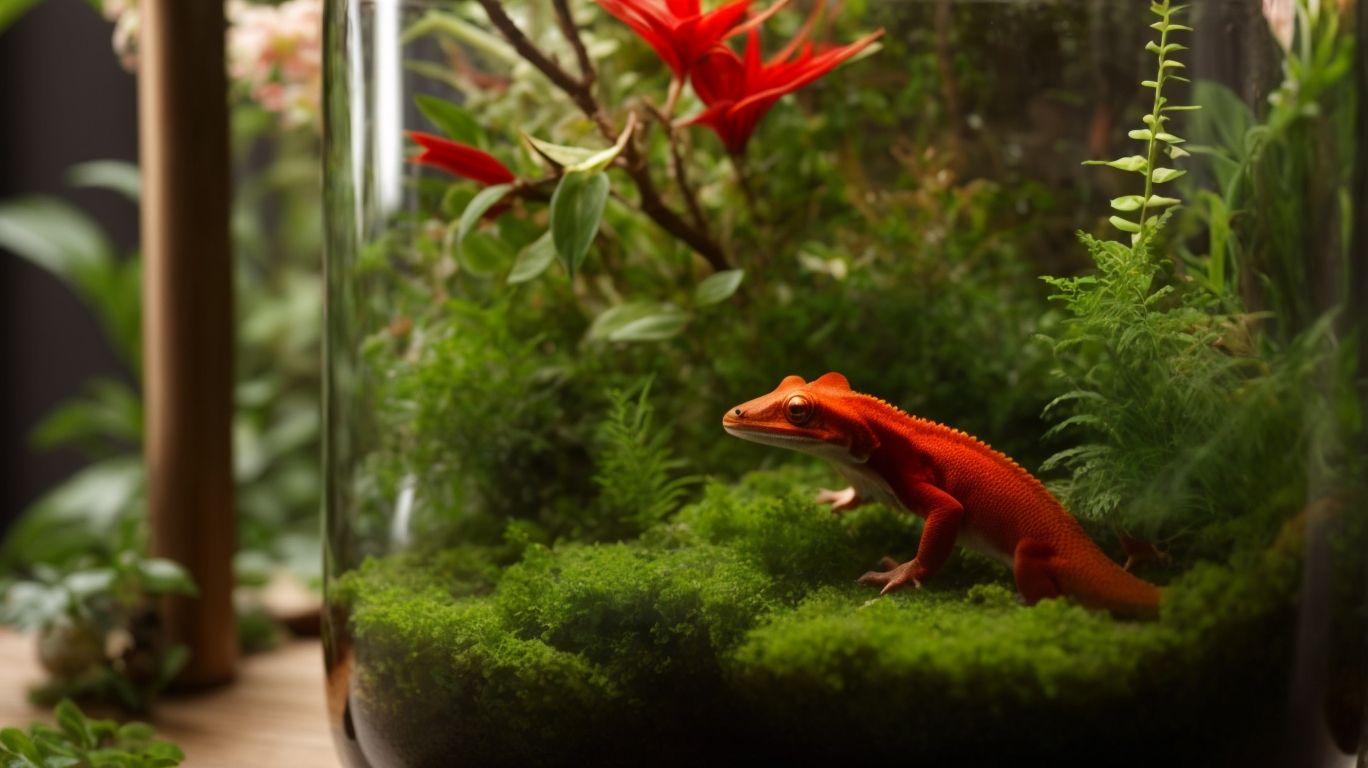
From Shy Snakes to Cuddly Companions: The Surprising Personalities of Ball Pythons
Table of Contents
Overview of Ball Pythons
Ball pythons, also known as royal pythons, are native to the tropical regions of Africa. They are medium-sized snakes, typically reaching a length of 3 to 5 feet, with some individuals growing up to 6 feet. These snakes are known for their distinctive patterns, which consist of dark brown or black patches on a lighter background. The patterns vary among individuals, making each ball python unique.
One of the reasons ball pythons are so popular as pets is their calm and gentle nature. Unlike some other snake species, ball pythons are not aggressive and rarely bite, even when they feel threatened. They have a tendency to curl up into a tight ball when they are scared or stressed, hence the name “ball python.” This defensive behavior, along with their shy and reserved nature, often leads people to assume that ball pythons are not social animals. However, this couldn’t be further from the truth.
While ball pythons may initially be wary of human interaction, they can quickly develop strong bonds with their owners. With patience and regular handling, these snakes can become surprisingly affectionate and even seek out their owner’s company. Many ball python owners have reported their snakes actively seeking out attention, whether it’s by gently nudging their hand or curling up around their arm or neck. Some even enjoy being held and petted for extended periods of time.
In addition to their social nature, ball pythons are relatively low-maintenance pets. They are not overly active and are known to be quite content spending most of their time in their enclosure. A properly set up terrarium with appropriate temperature and humidity levels, along with a hiding spot and suitable substrate, will provide a comfortable environment for a ball python. They are also relatively easy to feed, as they primarily eat rodents and can be fed frozen-thawed prey.
Genetics of Ball Pythons
Genetics plays a fascinating role in determining the unique traits and characteristics of ball pythons. These reptiles exhibit a wide variety of colors and patterns, which can be attributed to their genetic makeup. In this section, we will delve into the genetics of ball pythons and explore how these factors contribute to the mesmerizing appearances of these snakes.
Ball pythons have what is known as co-dominant inheritance when it comes to their color and pattern traits. This means that when two different alleles are present in an individual, both traits are expressed to some extent. For example, if a ball python has one allele for a certain pattern and another allele for a different pattern, both patterns will be visible in the snake’s skin.
One of the most iconic genetic traits in ball pythons is the “morph,” which refers to specific color and pattern variations. Morphs are created through selective breeding and can result in a wide range of unique appearances. Some popular morphs include the albino, which lacks pigment and appears white or yellow, and the pied, which has patches of white on a dark background.
Breeding ball pythons to create new morphs has become a popular hobby for reptile enthusiasts. Through careful selection and pairing of individuals with desired traits, breeders can produce offspring with increasingly intricate and visually striking patterns. This has led to the creation of countless morphs, each with its own distinct combination of colors and patterns.
Understanding the genetics of ball pythons is not only important for breeders but also for responsible pet owners. It can help them better appreciate and care for their snakes’ unique appearances and potentially anticipate any genetic health issues that may arise. Genetic testing is also becoming increasingly common, allowing owners to confirm the lineage and purity of their ball pythons.
Health and Wellness of Ball Pythons
Ball pythons, like any other pet, require proper care and attention to maintain their health and well-being. In this section, we will explore the key aspects of the health and wellness of ball pythons, including their diet, habitat, and common health issues.
One of the most crucial factors in keeping a ball python healthy is providing them with a suitable habitat. A spacious and secure enclosure is essential, as ball pythons need space to move and explore. The enclosure should be equipped with a heat source to maintain a consistent temperature gradient, as well as a hiding spot to provide them with a sense of security. Additionally, maintaining appropriate humidity levels is vital, as low humidity can lead to respiratory issues.
When it comes to diet, ball pythons are carnivorous and primarily eat rodents. It is recommended to feed them appropriately sized prey that is no larger than the width of the snake’s head. Frozen-thawed prey is the preferred choice, as it eliminates the risk of injury to the snake during feeding. It’s important to establish a regular feeding schedule and monitor the snake’s weight to ensure they are consuming an appropriate amount.
Regular veterinary check-ups are essential for the overall health and wellness of ball pythons. A qualified reptile veterinarian can conduct a thorough examination to detect any potential health issues. It’s also recommended to have your ball python tested for common diseases, such as inclusion body disease (IBD) and respiratory infections. Prompt veterinary care is crucial if any signs of illness or injury are observed.
Maintaining proper hygiene in the snake’s enclosure is essential to prevent the spread of disease. Regularly cleaning and disinfecting the enclosure, as well as washing your hands before and after handling the snake, can help minimize the risk of infection. Additionally, providing clean water at all times and regularly cleaning the water bowl is crucial for their hydration and overall health.
Recognizing the signs of a healthy ball python is essential for responsible pet ownership. A healthy python typically exhibits clear and bright eyes, vibrant skin coloration, and a well-maintained body weight. A python that is active, alert, and responsive to its surroundings is generally in good health. Conversely, signs of an unhealthy python may include lethargy, labored breathing, abnormal shedding, or changes in appetite. Any unusual lumps, bumps, or lesions on the skin should also be monitored. Regular veterinary check-ups, coupled with attentive observation of your ball python’s behavior and physical condition, are crucial for promptly identifying and addressing any potential health issues.
In summary, the health and wellness of ball pythons require proper habitat, a balanced diet, regular veterinary care, and good hygiene practices. By ensuring these factors are met, you can provide your ball python with the best possible care, promoting their overall well-being and longevity. Remember, a happy and healthy ball python will not only be a delightful pet but also a loyal companion for years to come.
Breeding Ball Pythons
Breeding ball pythons is a fascinating aspect of keeping these incredible reptiles as pets. It allows reptile enthusiasts to delve deeper into the genetic intricacies of these snakes and create unique and visually stunning morphs. In this section, we will explore the world of breeding ball pythons and discuss the important considerations and techniques involved.
Breeding ball pythons requires careful planning and preparation. It is essential to have a clear understanding of the genetics and desired traits of the parent snakes before attempting to breed them. Selecting the right pairings is crucial to produce offspring with the desired morphs. Breeders often spend years researching and acquiring specific breeding stock to create their dream morphs.
Female ball pythons are typically ready for breeding at around 2 to 3 years of age, while males may reach sexual maturity at 1 to 2 years. It’s crucial to ensure both snakes have attained sufficient size and weight for optimal reproductive health before initiating the breeding process.
The breeding process begins with introducing the male and female ball pythons. This can be done by housing them together in a specially prepared breeding enclosure. It’s important to closely monitor their interactions and ensure that both snakes are receptive to breeding. If the female is not interested or receptive, she may display defensive behaviors, such as hissing or striking, indicating that breeding should not proceed.
Once mating has occurred, it’s important to provide the female with a suitable egg-laying area, often in the form of a nesting box. She will lay her eggs in this box, which should be filled with a suitable substrate that retains moisture. It’s crucial to monitor the humidity levels in the nesting box to ensure the eggs develop properly.
After the female lays her eggs, they need to be carefully incubated. Ball python eggs require specific temperature and humidity levels for successful incubation. Breeders often use specially designed incubators to provide these optimal conditions. It’s important to monitor the eggs closely throughout the incubation period, as any deviations in temperature or humidity can affect the viability of the embryos.
Once the eggs hatch, the newborn ball pythons will require proper care and attention. They will need appropriate housing, feeding, and veterinary care to ensure their healthy development. It’s also essential to document and keep track of the lineage and genetic information of the offspring, especially if they are intended for future breeding purposes.
Breeding ball pythons can be a rewarding and exciting endeavor for reptile enthusiasts. It allows them to actively contribute to the preservation and development of unique morphs while deepening their understanding of the genetic intricacies of these incredible snakes. However, it’s important to remember that responsible breeding practices should be followed, and careful consideration should be given to the long-term welfare of the snakes and the ethical implications of breeding for profit or novelty.
Behavioral Aspects of Ball Python
Ball pythons are not only fascinating in appearance, but they also possess intriguing behavioral traits that make them even more captivating as pets. In this section, we will delve into the behavioral aspects of ball pythons and explore the unique behaviors that make them such interesting companions.
One notable behavior of ball pythons is their preference for hiding. These snakes are known for their shy and reserved nature, and they often seek out hiding spots in their enclosure to feel safe and secure. Providing plenty of hiding places, such as caves or foliage, allows ball pythons to exhibit their natural behavior and feel more comfortable in their environment.
Another interesting behavior of ball pythons is their thermoregulation. Like all reptiles, ball pythons rely on external heat sources to regulate their body temperature. They will move between warm and cool areas in their enclosure to maintain their preferred body temperature. This behavior can be observed as they bask under heat lamps or curl up in cooler spots of the enclosure. Understanding this behavior is crucial in providing the appropriate temperature gradient in their habitat.
Ball pythons are also known for their curious nature. While they may initially be wary of new stimuli, they are often observed exploring their surroundings, investigating objects with their tongue, and even climbing on branches or other objects in their enclosure. This curiosity makes them a delight to observe and interact with, as they are constantly seeking out new experiences.
Despite their shy and reserved nature, ball pythons can develop strong bonds with their owners. Regular handling and interaction with their owners can help build trust and confidence in these snakes. With time and patience, ball pythons can become comfortable with human interaction and even seek out attention from their owners. It’s crucial to be attentive to signs of stress, such as excessive hiding, refusal to eat, frequent pacing, and defensive behavior, as these indicators can guide adjustments in their environment or handling practices to ensure their well-being.
In summary, ball pythons exhibit a range of interesting behaviors that contribute to their unique personalities. Their preference for hiding, thermoregulation, curiosity, and their potential for forming strong bonds with their owners all add to their appeal as pets. By understanding and appreciating these behavioral aspects, we can provide a stimulating and enriching environment for ball pythons, allowing them to thrive and flourish as lovable and fascinating companions.
Legal and Ethical Considerations
When considering owning a ball python, it is important to be aware of the legal and ethical considerations associated with these magnificent creatures. While ball pythons are popular pets, there are regulations and guidelines that need to be followed to ensure the well-being of the snakes and their conservation in the wild.
First and foremost, it is crucial to understand the legality of owning a ball python in your area. Laws regarding the ownership and transportation of exotic pets vary from country to country and even from state to state. Some places require permits or licenses to keep certain species of snakes, including ball pythons. It is essential to research and comply with the laws in your area to avoid any legal issues and ensure that you are providing a suitable and lawful home for your snake.
Ethical considerations also play a significant role in owning a ball python. These snakes are not domesticated animals but rather wild creatures that have been bred in captivity. While they can adapt well to life in captivity, it is important to remember that they have specific needs and instincts that must be met for them to thrive.
One ethical consideration is ensuring that you are able to provide the proper care and habitat for a ball python. These snakes require a specific environment with proper heating, humidity levels, and hiding spots. It is essential to invest in the necessary equipment and set up their enclosure correctly to mimic their natural habitat as closely as possible.
Additionally, responsible sourcing of ball pythons is crucial for their conservation. There is a demand for rare morphs and unique color patterns, which has led to unethical breeding practices, such as inbreeding or hybridization. It is important to support reputable breeders who prioritize the health and well-being of their snakes and who engage in ethical breeding practices.
Responsible ownership also means considering the long-term commitment involved in caring for a ball python. These snakes can live for 20 to 30 years or even longer in captivity. It is essential to be prepared to provide a lifelong commitment to their care and well-being, including regular veterinary check-ups, proper nutrition, and mental stimulation.
In conclusion, becoming a responsible ball python owner involves recognizing both legal and ethical responsibilities. Despite the absence of specific conservation projects exclusively focused on ball pythons due to their non-endangered status, it remains imperative to comprehend and adhere to regulations governing their ownership. Responsible ownership extends beyond legal compliance, emphasizing the provision of proper care, a suitable habitat, and a lifelong commitment to the well-being of these captivating creatures. By conscientiously following these principles, you can play a crucial role in being responsible and ethical stewards of ball pythons, contributing to their conservation and ensuring a harmonious coexistence between these remarkable reptiles and human caretakers.
Related Posts

Incubating Crested Gecko Eggs: Essential Techniques and Tips
Crested geckos are fascinating reptiles that are known for their…

Red Crested Gecko Health: Common Issues and Preventive Care
Are you a proud owner of a red crested gecko?…

Creating the Ideal Environment for Your Red Crested Gecko
Do you own a red crested gecko or are you…

No Comments